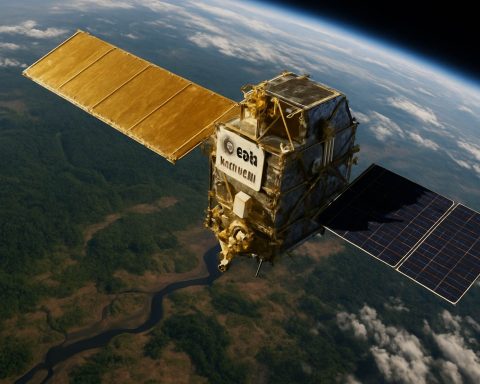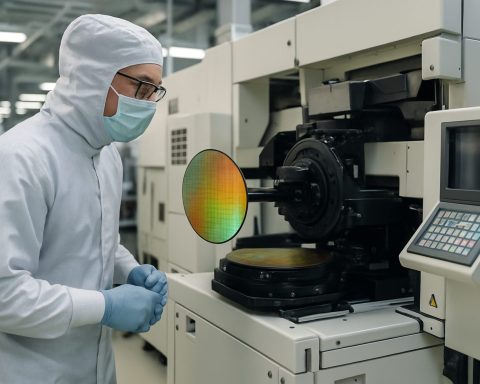- Stockholm is spearheading a sustainable urban logistics initiative, featuring lightweight electric vehicles for efficient last-mile deliveries.
- Clean Motion’s EVIG vehicle, equipped with solar charging and battery swap technology, is central to this effort.
- The initiative aims to tackle urban congestion, air pollution, and noise, with the goal of creating a zero-emission city by 2030.
- A 12-month trial in collaboration with Foodora will test the effectiveness of these innovative vehicles in real urban settings.
- GoCimo’s shared battery infrastructure will enhance electric vehicle adoption and efficiency.
- Funded by Vinnova and Viable Cities, this project could serve as a model for other cities pursuing sustainable transportation solutions.
Beyond the picturesque facades of Gamla Stan and beneath the bustling avenues of Stockholm, a quiet revolution is taking root. Clean Motion, in tandem with the City of Stockholm, Lund University, GoCimo, and Foodora, is charting an innovative path towards sustainable urban logistics. The focus? Electrifying and optimizing last-mile deliveries—a project under the emblematic Stockholm Local Transition (STOLT) initiative.
Picture this: in the heart of Sweden’s capital, lightweight electric vehicles glide unobtrusively, their silence belied by the power beneath their streamlined exteriors. The EVIG, Clean Motion’s flagship vehicle, is at the forefront. Equipped with solar charging and enhanced by cutting-edge battery swap technology, these vehicles redefine what is possible in urban transportation. The ability to swap batteries swiftly means EVIGs can roam the city without the downtime of traditional charging, promising uninterrupted, efficient, and eco-friendly deliveries.
This transformative effort is more than just an idealistic pursuit. It is a pragmatic response to the urban challenges of congestion, air pollution, and noise—a trifecta that has long plagued cities worldwide. The initiative is fueled by a robust vision: to sculpt a zero-emission city by 2030, a goal supported by strategic funding from Vinnova and Viable Cities. Clean Motion has already secured a development grant of SEK 920,000 to propel this vision into reality.
Stockholm’s streets are set to become a proving ground during a 12-month test period. In collaboration with Foodora, EVIG will navigate real-world environments, weaving silently through the delicate atmosphere of areas like the Clean Air Zone Class 3. The outcome could redefine logistical norms, paving the way for an era where delivery efficiency meets environmental stewardship.
On the horizon, a shared battery infrastructure spearheaded by GoCimo beckons broader applications. By democratizing battery access across diverse electric vehicles, this infrastructure will dissolve the barriers to widespread adoption. Thus, as Clean Motion’s EVIG vehicles cruise through the city, they symbolically carry the promise of a new transportation paradigm—one that transcends boundaries with an adaptable, energy-efficient, and sustainable model.
For urban planners, sustainability enthusiasts, and citizens at large, this is a call to imagine cities not as bustling miasmas of pollution but as symphonies of clean, efficient, and harmonious living. As the results from this pioneering project unfold, the implications could ripple far beyond Stockholm, offering a blueprint for any city seeking to embrace a cleaner, more efficient future.
In the quest to electrify urban transport, Stockholm’s bold step is a testament that innovation and sustainability are not just aspirations but achievable realities.
Revolutionizing Urban Transport: How Electric Vehicles Are Transforming Last-Mile Delivery in Stockholm
Introduction
As urban centers grapple with congestion, pollution, and noise challenges, innovative solutions are emerging to reshape how cities manage last-mile deliveries. This article delves into Stockholm’s groundbreaking initiative with Clean Motion, providing a comprehensive overview of the EVIG vehicle’s impact and the broader implications for sustainable cities worldwide.
Clean Motion’s EVIG: A Game-Changer in Urban Logistics
Features and Specifications:
1. Solar Charging: The EVIG comes equipped with solar panels, enabling it to harness renewable energy directly, reducing dependency on external power sources and fossil fuels.
2. Battery Swap Technology: One of the EVIG’s standout features is its ability to swap batteries swiftly, minimizing downtime and enhancing operational efficiency.
3. Lightweight Design: The vehicle’s streamlined design ensures minimal energy consumption, making it an ideal solution for dense urban environments.
How Clean Motion and Partners Are Pioneering Sustainability
Collaborative Effort:
– Local Partnerships: Clean Motion has teamed up with the City of Stockholm, Lund University, and Foodora, among others, to pilot this sustainable delivery solution.
– Strategic Support: The project is backed by Vinnova and Viable Cities, showcasing a unified push towards a zero-emission goal by 2030.
Real-World Impact:
– Pilot Testing: Over a 12-month period, the EVIG will navigate Stockholm’s Clean Air Zone, offering valuable data on operational efficiency and environmental impact.
– Scalability: Successful implementation could set a precedent for cities globally, highlighting Stockholm as a beacon of sustainable transport innovation.
Broader Implications and Future Trends
Industry Trends:
– Decentralized Energy Infrastructure: The shared battery infrastructure concept led by GoCimo represents a shift towards more accessible and democratized energy solutions for electric vehicles.
– Smart Urban Planning: As cities evolve, integrating such technologies into broader urban strategies becomes crucial for creating sustainable and livable environments.
Market Forecast:
– According to industry analyses, the global market for electric vehicles and supporting infrastructure is projected to grow exponentially, driven by heightened environmental awareness and regulatory support.
Challenges and Considerations
Potential Limitations:
– Initial Costs: While long-term savings and environmental benefits are clear, the initial infrastructure and vehicle costs might pose barriers.
– Technology Adoption: Wider acceptance is contingent on public and private stakeholders’ commitment to embracing new technologies and solutions.
Actionable Recommendations
For cities and companies looking to adopt similar systems, consider the following steps:
1. Engage Stakeholders Early: Foster collaboration across municipal, academic, and commercial entities to align goals and resources.
2. Leverage Public Funding: Explore grants and funding from environmental bodies to offset initial costs and incentivize innovation.
3. Educate and Raise Awareness: Highlight the environmental and economic benefits through community outreach and educational campaigns.
Conclusion
Stockholm’s innovative approach to last-mile delivery through the EVIG vehicle is a promising step toward sustainable urban logistics. By reducing emissions and optimizing efficiency, this model could serve as a template for cities worldwide eager to advance toward a sustainable, zero-emission future.
For more information on sustainable urban solutions, visit Clean Motion and City of Stockholm.









